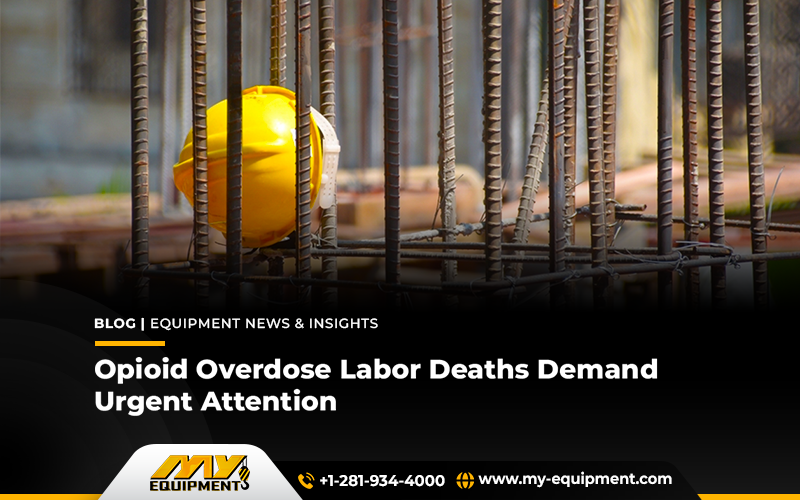The last two decades have turned out as a murder mystery when construction industries started losing their workers with an increasing death toll. Opioid overdose has been the main reason behind why workers are losing their lives.
The opioid crisis started before 2020 and spread at a fast pace after it.
The previous five-year trajectory reported by The Centers for Disease Control and Prevention (CDC) claims, that the number of workers dying in the United States due to opioid overdose.
The highest rate of opioid overdose was first recorded in 2020 after the pandemic hit the world. Unfortunately, a total of 105,000 Americans lost their lives in the opioid crisis till 2022 and the present. Around 70% of overdose deaths in the U.S. are due to opioids. Major contributors to opioid overdose deaths are synthetics featuring fentanyl.
These overdose deaths have created a toll on the death of one’s families, the national economy as well and U.S. construction labor communities. The opioid crisis significantly impacts a substantial portion of the U.S. population, affecting individuals across various ages and exhibiting distinct demographic, geographic, and occupational disparities.
According to the National Center for Health Statistics, the opioid crisis has fully taken over the extraction and construction industry of the United States. Quoted in their release of “Drug Overdose Mortality by Usual Occupation and Industry”, a total of 46 U.S. states and NYC are under the crisis.
It’s gaining popularity at a higher space because it’s the first time opioid overdose has been highlighted by the National Health Center.
- Active voice: Reports indicated that workers reported a total of 163 cases per 100,000 workers.
- Just counting on the U.S. construction industry the rate is 131 out of 100,000 workers
- Opioid overdose, rather than suicide-based deaths, primarily influences the death rate in the construction industry.
Estimating The Risk Parameters
Overcoming opioid overdose deaths and reducing opioid consumption is not achievable through a single solution, as it remains a complicated health concern.
There are several interrelated parameters due to which the opioid crisis is strengthening among the construction extraction sectors of the U.S.
Just addressing the issue of opioid overdose embarks as acknowledging a dominant health problem.
The misuse of substances and the stigma around this topic hides it from apt care in terms of fewer rehabilitation facilities.
However, the occurrence of Musculoskeletal injuries that workers face on-site and offsite construction operations are the reasons why health advisers prescribe opioids.
Musculoskeletal Fatigues
One of the most contributing factors to the opioid overdose crisis is Musculoskeletal fatigue. The high frequency of Musculoskeletal (MSK) fatigue is affecting the well-being of construction workers.
Around 34% of construction labor has to go through MSK injuries which leads to opioid prescriptions, according to a recent survey by The Center for Construction Research and Training (CPWR).
What’s Ahead?
The increasing number of opioid-based deaths is concerning for all the U.S. construction and extraction sectors. Especially with the rise of construction projects, the main intangible asset of any construction industry is its labor.
Therefore, prescriptions for muscular injuries are becoming a major source of the persistent opioid crisis in the construction industry. According to the latest report “In Waging a Counterattack Against Opioids in the Workplace and at Home,” the population of workers with the opioid crisis is increasing. Additionally, these prescriptions hold 20% longer and stronger aftereffects.
However, The American Medical Association (AMA) states that the prescription of opioids will decrease in the coming years. The AMA’s report indicates a 49.4% decrease from 2012 to 2022.
Nonetheless, the AMA states that the reduction in opioid-based prescriptions isn’t proportional to the elimination of drug-based mortality.


 1400 Broadfield Blvd, Houston, TX 77084,
USA.
1400 Broadfield Blvd, Houston, TX 77084,
USA.